Choosing between studio monitors and headphones can be a challenging endeavor for both audio enthusiasts and professionals. Each option offers distinct design features and purposes, which significantly influence sound quality and the overall listening experience.
This article examines the differences between studio monitors and headphones, evaluating their respective advantages and disadvantages while discussing various usage scenarios. It emphasizes critical considerations such as budget and room acoustics to assist individuals in identifying the most suitable option for their audio requirements.
Whether one is engaged in mixing tracks or enjoying music at home, a comprehensive understanding of these differences will facilitate an well-considered choices process.
Differences in Design and Purpose
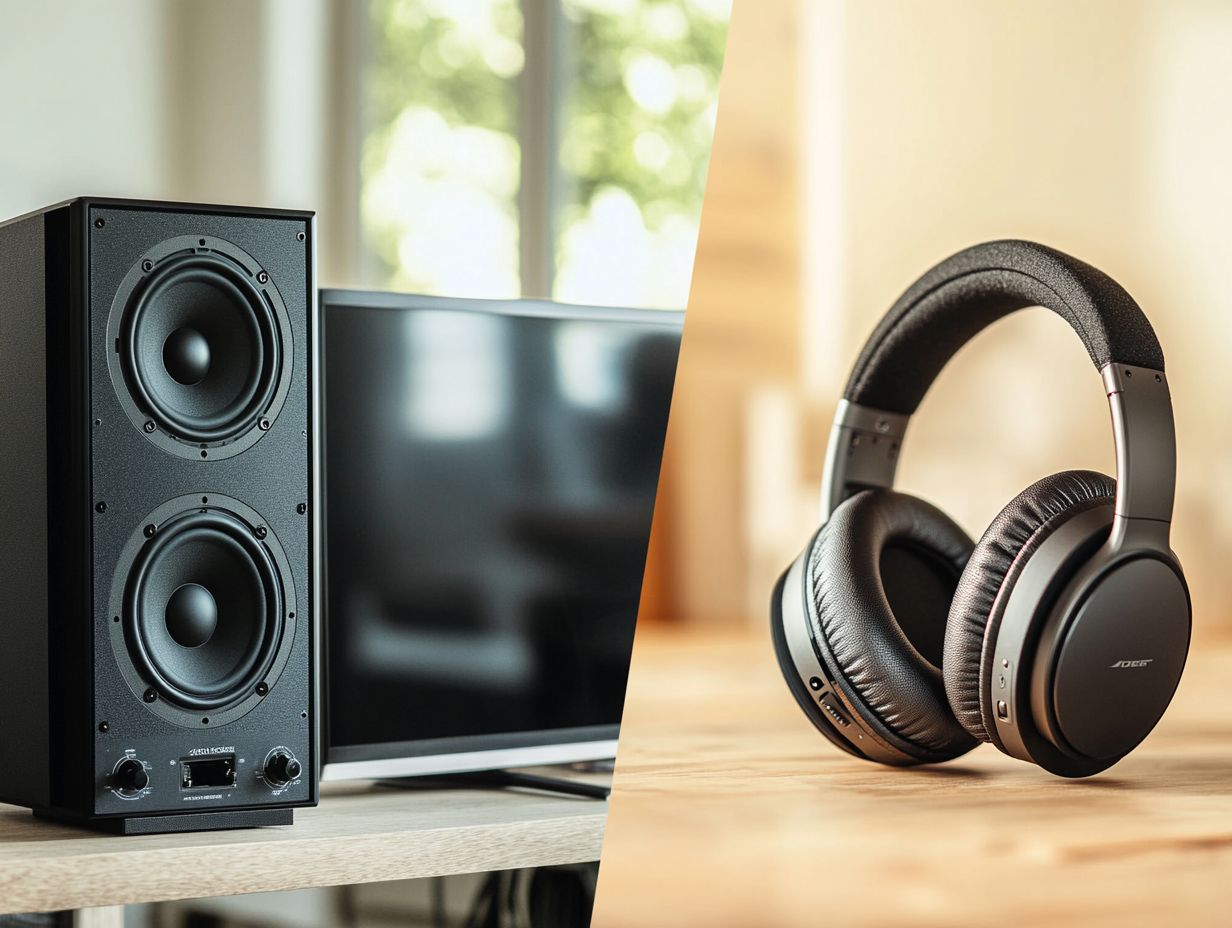
In the realm of professional audio and consumer audio equipment, comprehending the distinctions in design and purpose between studio monitors and headphones is essential for achieving optimal audio quality and sound reproduction.
Both tools serve specific functions in audio production, addressing various needs such as mixing, mastering, and critical listening. Studio monitors are designed to deliver a flat frequency response and an accurate soundstage, while headphones provide portability and isolation, which can enhance the listening experience in diverse environments.
Understanding these differences enables users to make informed decisions based on their individual requirements.
Sound Quality Comparison
A comprehensive comparison of sound quality between studio monitors and headphones indicates notable differences that can significantly impact the audio experience during mixing and mastering sessions.
Studio monitors typically provide superior sound accuracy and a broader soundstage, facilitating a clearer understanding of spatial characteristics and stereo imaging. Conversely, headphones create a more individualized listening environment, emphasizing comfort and portability; however, this may occasionally result in compromises regarding bass response and treble clarity.
It is essential to evaluate these factors to optimize audio fidelity and achieve the desired sound characteristics.
Pros and Cons of Each Option
Examining the advantages and disadvantages of studio monitors and headphones is essential for individuals involved in audio production or casual listening, as each option offers distinct benefits and drawbacks.
Studio monitors are engineered to provide an accurate representation of sound, enabling producers to make precise adjustments to their mixes. However, they require sufficient space and specific placement to function optimally, which can pose challenges for those operating in smaller environments where acoustic imperfections may distort audio perception.
In contrast, headphones offer a more personalized listening experience and can be utilized in a variety of settings, making them a convenient choice for individuals who enjoy music on the go or for creators seeking flexibility.
The trade-off often resides in sound quality; while many headphones deliver commendable performance, they may not capture the full frequency spectrum as accurately as studio monitors.
Ultimately, individuals must assess their specific requirements—such as portability, comfort, or critical listening—against the associated costs and audio fidelity to identify the most suitable solution for their auditory needs.
Usage Scenarios for Studio Monitors and Headphones
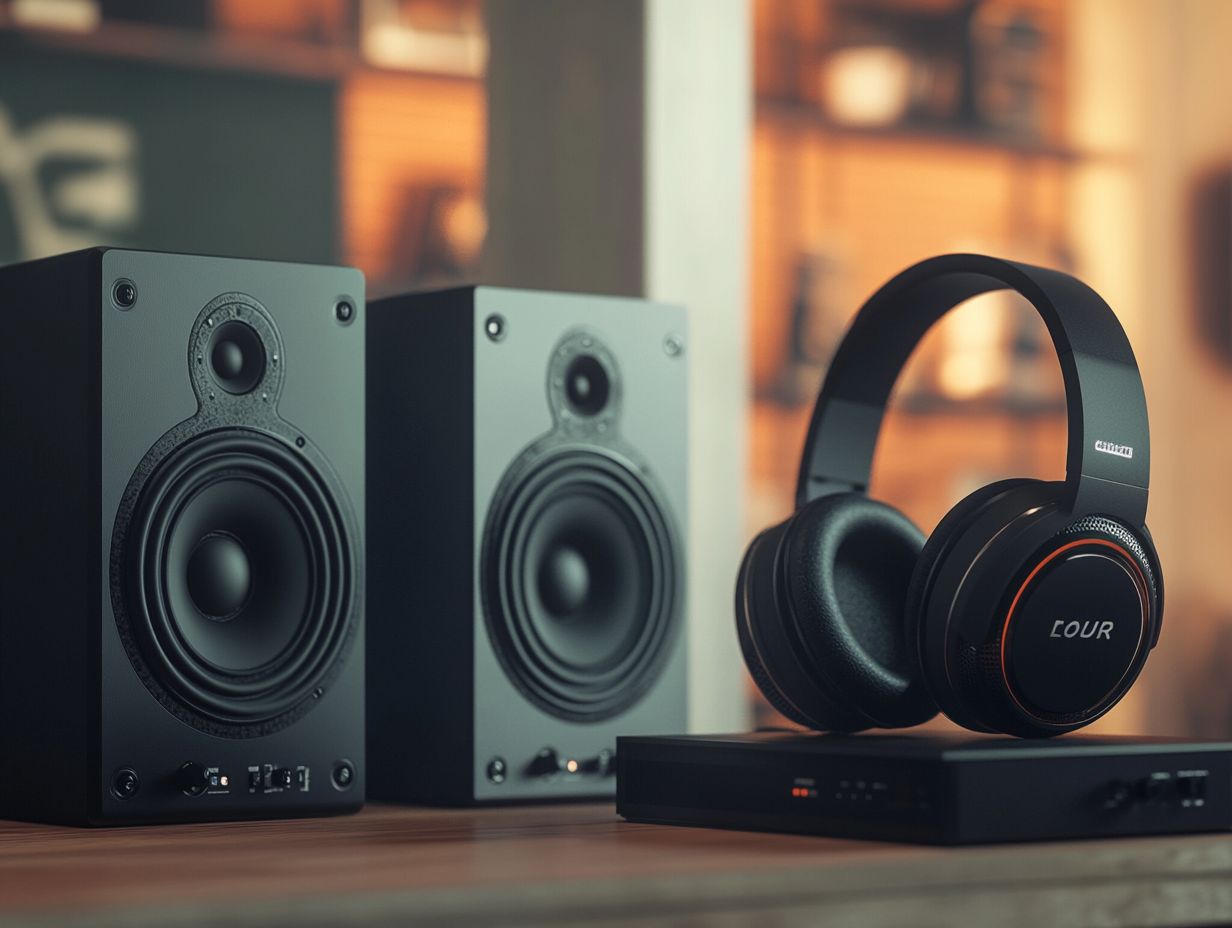
Understanding the various usage scenarios for studio monitors and headphones is crucial for selecting the appropriate equipment according to one’s audio needs, whether for professional audio production or casual listening.
Studio monitors excel in a well-treated listening environment, delivering an accurate representation of sound that is essential for mixing and mastering projects.
In contrast, headphones are frequently favored for portable music enjoyment or situations requiring sound isolation, making them ideal for bustling urban settings or use with portable devices.
Each option occupies a distinct role in the audio landscape, influenced by user preferences and specific requirements.
When to Use Each Option
The decision of when to utilize studio monitors versus headphones is influenced by several factors, including audio quality requirements, individual preferences, and specific usage scenarios.
Studio monitors are ideally employed in a well-acoustic-treated studio environment, where accurate sound reproduction is essential for mixing and mastering purposes. Conversely, headphones may be more advantageous in situations where space is limited or when a more immersive listening experience is desired, particularly during casual listening or travel. Recognizing these contexts enables users to make informed choices that align with their audio needs.
For example, in scenarios where one is working late at night or in a densely populated area, headphones offer a vital solution by providing sound isolation and minimizing disturbances to others while delivering excellent audio fidelity. In contrast, studio monitors excel when a clear representation of how the music will sound in real-world environments is required, thereby facilitating accurate mixing decisions.
Additionally, when comfort is a consideration, wearing headphones for extended periods may prove uncomfortable, leading some users to prefer the more natural feel of studio monitors.
Ultimately, the choice between these two options can significantly impact the overall audio experience, depending on whether sound quality or practicality is prioritized in varying environments.
Factors to Consider When Choosing Between Studio Monitors and Headphones
Choosing between studio monitors and headphones necessitates careful consideration of various factors, including budget, room acoustics, and individual preferences, all of which can greatly impact the overall audio experience.
Studio monitors demand a dedicated listening environment with appropriate acoustic treatment to enhance sound accuracy and reduce distortion, often requiring a significant financial investment.
Conversely, high-quality headphones may present a more cost-effective solution and provide versatility across different settings, appealing to both professional and casual listeners.
A thorough understanding of these factors is essential for making a decision that aligns with one’s audio objectives.
Budget, Room Acoustics, and Personal Preferences
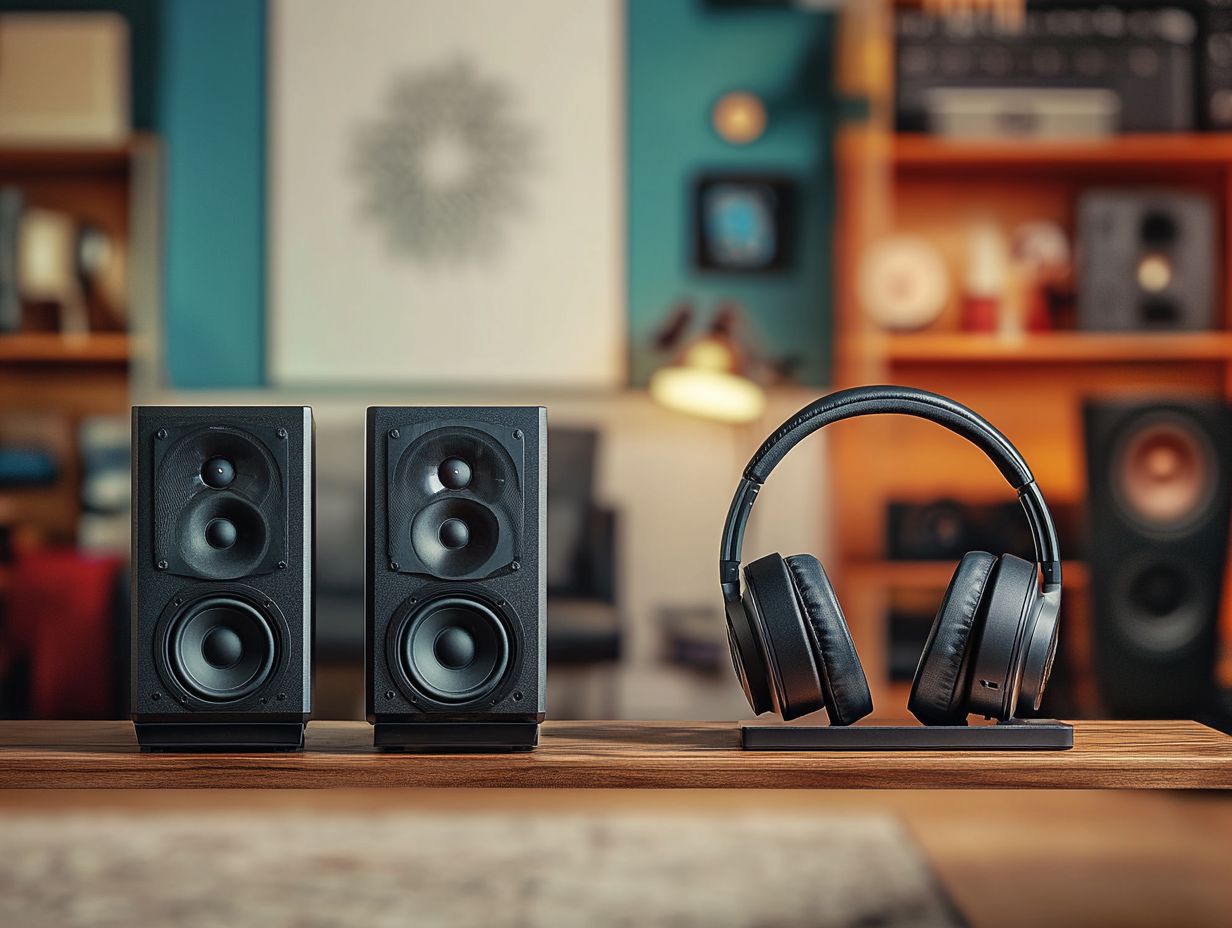
Budget, room acoustics, and personal preferences are critical factors in determining whether studio monitors or headphones are the appropriate choice for an audio setup. A well-designed studio monitor configuration may necessitate a substantial investment—not only in the monitors themselves but also in adequate acoustic treatment to ensure accurate sound reproduction.
In contrast, headphones frequently provide a more cost-effective alternative without sacrificing portability and comfort, making them suitable for a variety of use cases. It is essential to consider these factors in relation to specific audio needs to make an informed decision.
For example, individuals working in small or untreated rooms may find that studio monitors fail to deliver clarity due to poor acoustics, resulting in an inaccurate listening experience. In such scenarios, investing in high-quality headphones can facilitate precise monitoring, independent of environmental challenges.
Additionally, individual listening habits and the genres of music produced can significantly influence this choice; genres that emphasize bass may lead to a preference for studio monitors to fully appreciate low-frequency sounds. Ultimately, a thorough understanding of personal audio requirements and spatial limitations can effectively guide the decision-making process.
Which Option is Right for You?
Determining whether studio monitors or headphones are the appropriate choice ultimately depends on individual preferences, audio production requirements, and the specific context in which the equipment will be utilized.
For individuals who frequently engage in critical listening or professional audio work within a dedicated space, studio monitors may offer the accuracy and detail necessary for effective mixing and mastering. Conversely, those who prioritize portability and comfort for casual listening or mobile audio experiences may find that high-quality headphones are the more suitable option. A thorough assessment of personal priorities will aid in making the best decision.
Additionally, the acoustics of one’s environment play a significant role in this choice. While studio monitors excel in creating a spatial audio experience that can reveal subtle nuances in mixes, headphones often provide superior sound isolation, making them ideal for use in acoustically challenging environments.
It is also crucial to consider budgetary constraints, as investing in premium monitors yields different benefits compared to high-end headphones. Ultimately, the optimal choice depends on the careful balancing of these factors in accordance with one’s unique audio production style and lifestyle needs, ensuring that the selected equipment complements the way one creates and enjoys sound.
Frequently Asked Questions
What is the difference between studio monitors and headphones?
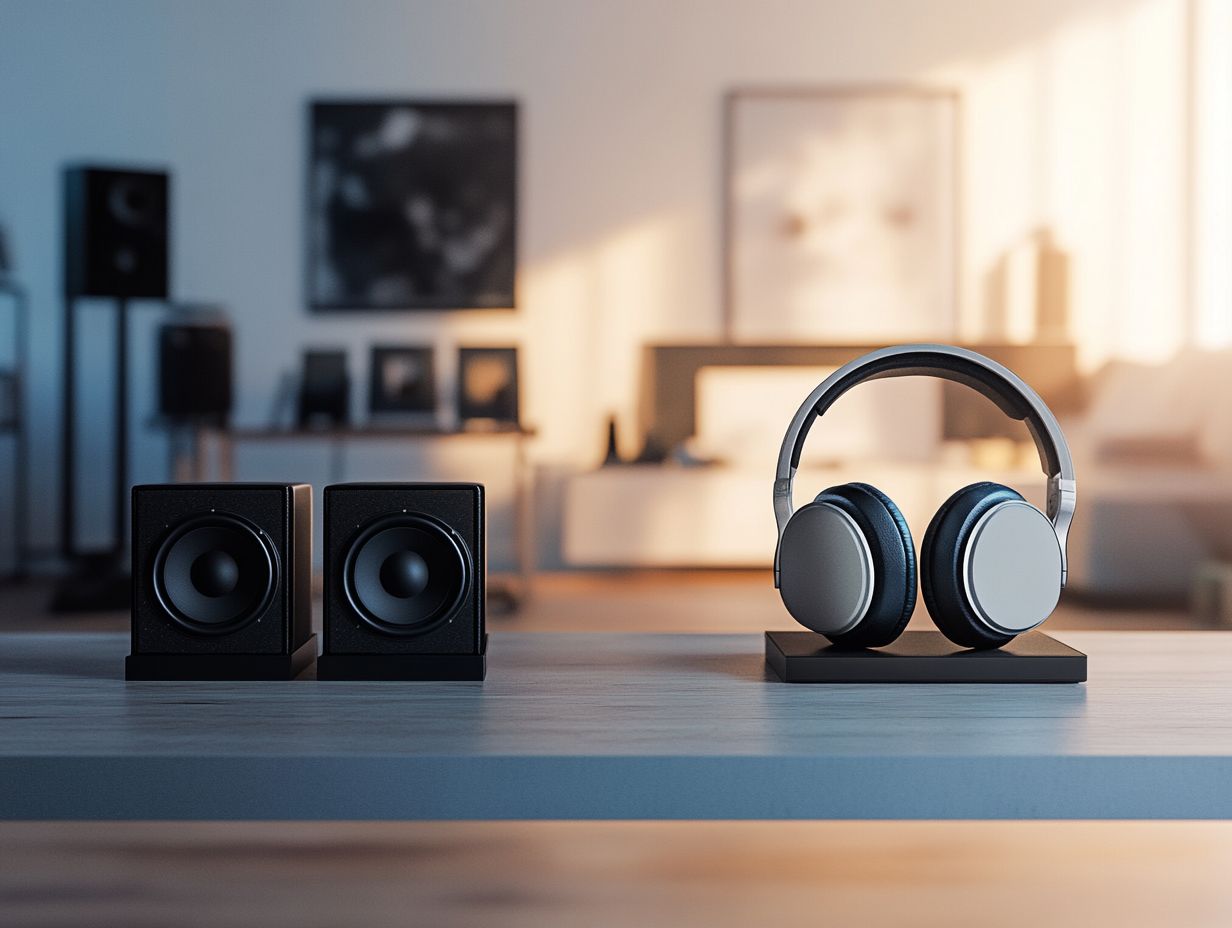
Studio monitors are speakers designed specifically for professional audio production and recording, while headphones are personal listening devices that deliver sound directly to the ears.
Which is better for music production, studio monitors or headphones?
Neither is inherently better, as both have their own advantages and disadvantages. Studio monitors provide a more accurate representation of sound, while headphones offer more detailed listening and isolation capabilities.
Can I mix and master my music solely using headphones?
While it is possible to mix and master using only headphones, it is not recommended as they do not provide an accurate representation of sound in a room. It is best to use a combination of both studio monitors and headphones for optimal results.
Do I need to spend a lot of money on studio monitors or headphones?
Not necessarily. There are affordable options for both studio monitors and headphones that still provide quality sound. However, it is important to invest in good quality equipment to ensure the best results in music production.
What should I consider when choosing between studio monitors and headphones?
Consider the type of music you will be producing, the space you will be using them in, and your personal preferences. It is also important to demo and compare different options to find the best fit for your needs.
Can I use studio monitors and headphones together?
Yes, it is common for producers to use both studio monitors and headphones in their workflow. Studio monitors provide an overall sound representation, while headphones can be used for detailed and isolated listening.

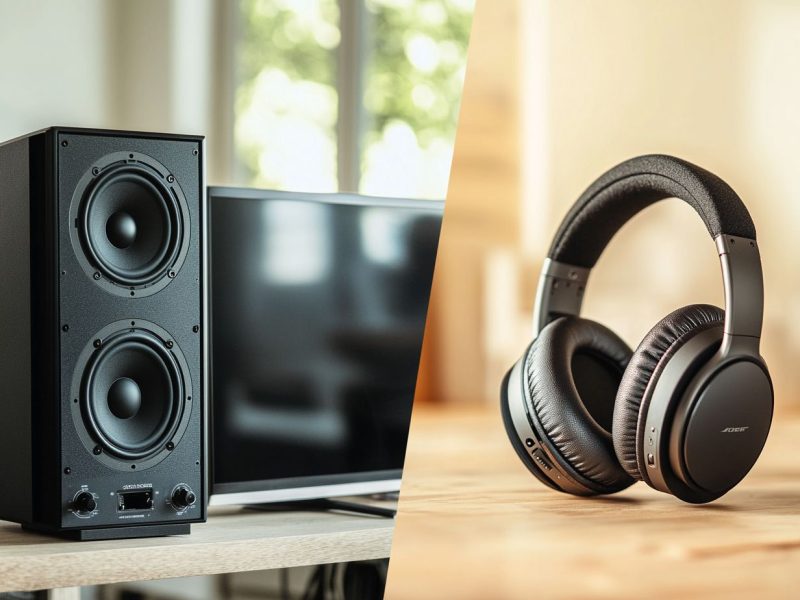
 Unlock Your Creativity: The Best MIDI Controllers for Beginners
Unlock Your Creativity: The Best MIDI Controllers for Beginners